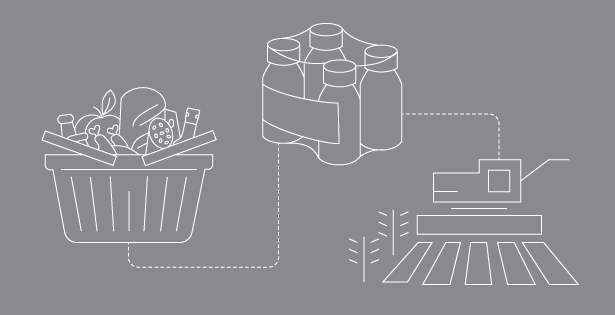In the world of manufacturing, demand forecasting is considered the suite of tools and data that allow users to predict future orders of goods and services. This data can be critical to manufacturers as they evaluate production capacities and order raw materials. Once a demand forecast is generated, it can be fed into a Material Requirements Planning (MRP) system to create a production plan.
So why is accurate demand forecasting important? The main reason is that the demand forecast is the baseline for all long-term planning processes. Prior to customer orders being placed, this may be the only data that an MRP system uses to generate a rough cut capacity plan or, if the forecast is long enough, can be used to create more capacity to meet the expected demand and help create a long-term budget. This is especially critical in industries with long lead times on raw materials or finished goods as products may need be procured or start production before customer orders are even placed. Additionally, demand forecasting can be used to smooth out inconsistent or seasonal customer orders by looking at the big picture instead of order by order.
How is Demand Forecasting Typically Accomplished?
There is a myriad of ways that manufacturers accomplish demand planning, from simple, back-of-the-napkin calculations to state of the art algorithms and machine learning. Depending on the complexity of the business, there be forecast accuracy gains being left off the table. While using Excel may be comfortable for many, it can be leaving a lot left to desire.
What are the challenges to these kinds of planning processes? Many businesses or manufacturers use institutional knowledge to know when product is going to be produced or forecast the demand in their heads. For example, if a buyer knows that a certain finished good is typically produced on a three-week cycle, they may buy raw materials for those products prior to the production plan is published. While this may be advantageous more often than not, it may reduce flexibility of the business to adopt to changing business conditions and adjust the production plan. Additionally, any time people in that supply chain process leave, it puts the whole institutional system at risk.
Finally, whether these demand plans are generated in Excel, a legacy MRP system, or within the production planner’s head, there are inherent risks that the forecast is not going to be accurate, even when collaborating with the sales and customer service teams. It is also taking up the planner’s time trying to figure out the process each time the forecast needs to be adjusted instead of automating it. This would free up the planner or forecaster to do more value-added tasks. Businesses not taking advantage of today’s tools could be leaving efficiencies, and profits, on the table.
Can We Make Demand Forecasting Better?
There are countless ways to make the forecasting process better, but far and away the best way is to use a modern demand forecasting system. To illustrate, modern demand forecasting systems can take historical sales data and apply machine learning to extrapolate demand. Importantly, these machine learning processes can be trained to detect seasonality as well which is something often lacking in legacy or Excel based spreadsheets. Another thing that modern systems can do is take huge amounts of other, seemingly unrelated data or events, such as weather patterns, and apply it to the forecast. Businesses with access to Big Data or large, complex datasets can also include this data in forecasting tools to improve the forecast or even detect patterns that are difficult for humans to comprehend.
Are automated demand forecasts always going to be 100% accurate? The answer is no. Planners and forecasters are still necessary for handling exceptions and implementing long term strategy and adjusting the algorithms. For example, at the onset of the Covid-19 pandemic, no automated demand forecast in the world would have been able to predict what demand patterns would be—that is still the job of the planner. But as time went on and with human intervention and adjustments, these planning algorithms were able to get back on track.
Where Do We Go from Here?
As technology continues to advance, there are several things that should be looked at. As discussed earlier, a modern demand forecasting tool is essential, but also one that integrates with modern ERP and MRP systems. This will make the transition of sales data and history seamless to the demand forecasting tool and also make the data transfer of the forecast back into the MRP much easier as well.
One of the best overall tools available to accomplish this is the Microsoft Dynamics 365 suite of ERP tools. Combined with Azure Machine Learning, Microsoft Dynamics 365 for Finance and Supply Chain (D365 F&SC) can export data to Azure where a suite of statistical forecasting tools can be run in combination with machine learning. This can generate a forecast that can then be imported back into D365 F&SC for review and approval. With the forecast into D365 F&SC, MRP can be run to generate a seamless production plan and to decrease inventory levels, which will be discussed more in future articles.

 RSMUS.com
RSMUS.com

